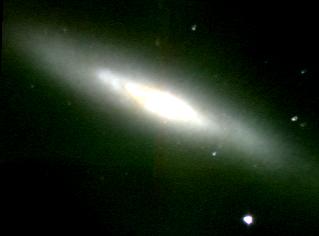
KHJ (OAGH) - The disk and bar
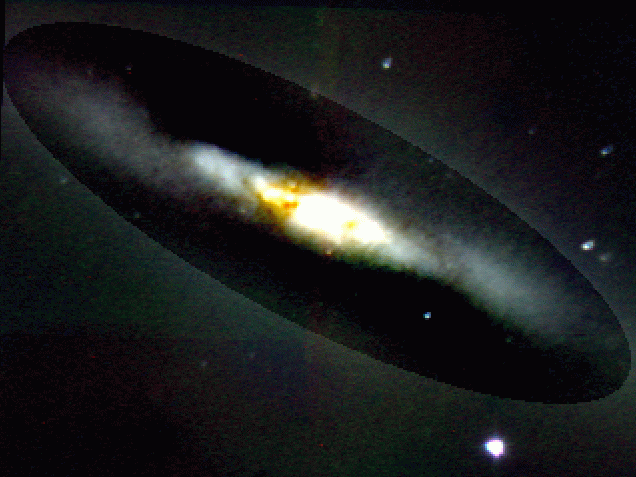
KHJ (disk subtracted)- Spiral Arms
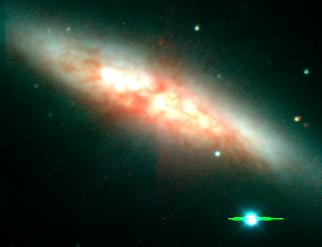
KVB - The dust filaments
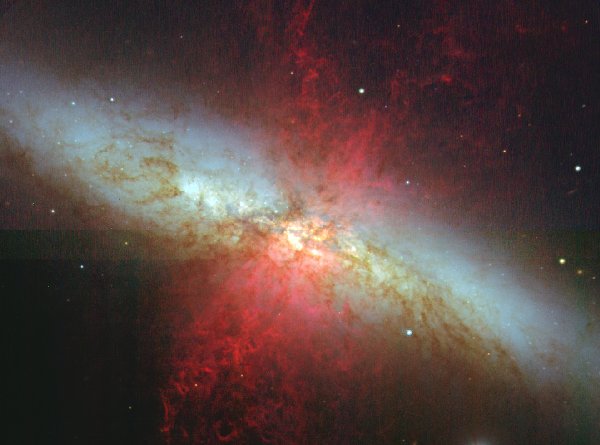
HaRB (Subaru) - superwind cone
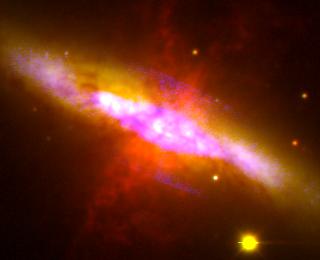
Disk, Spiral and superwind cone
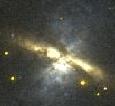
UV (Galex) - superwind cone
| Morphological type | Irr II/Amorphous | Sandage & Brucato (1979) |
| mB(mag) | 9.30 | NED |
| mK(mag) | 4.67 | NED |
| fFIR (W/m2) | 5.84E-11 | NED |
| Diameter (Holmberg) | 13.4'x8.5' | Appleton et al. (1981) |
| Velocity | 175 km/s (CO) 183 km/s (HI) | Young & Scoville (1984) Appleton et al. (1981) |
| Distance | 3.63 Mpc | Freedman et al. (1994) |
| Rotation curve | Keplerian | Sofue (1998) |
| Mass | 6x109 | Sofue (1998) |
| LFIR | 3x1010 | IRAS |
| SFR | 10 Mo/yr | |
| Inclination angle | 77o | Mayya (2005) |
| Position angle | 62o | Mayya (2005) |
| Disk scalelength | 825 pc (K-band) | Mayya (2005) |
| Bar length | 1 kpc | Telesco et al. (1991) |
| Spiral pitch angle | 14o | Mayya (2005) |
| HI mass | 2.9x109 | Crutcher et al. (1978) |
| Molecular gas mass | 2.9x108 | Young & Scoville (1984) |
| Tidal Tails - HI/CO | Yun, Ho, & Lo |
The following set of images summarizes most of the observed morphological characteristics.
 KHJ (OAGH) - The disk and bar |
 KHJ (disk subtracted)- Spiral Arms |
 KVB - The dust filaments |
 HaRB (Subaru) - superwind cone |
 Disk, Spiral and superwind cone |
 UV (Galex) - superwind cone |
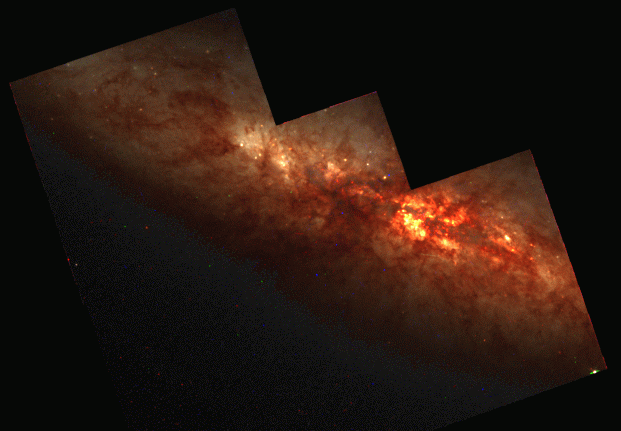
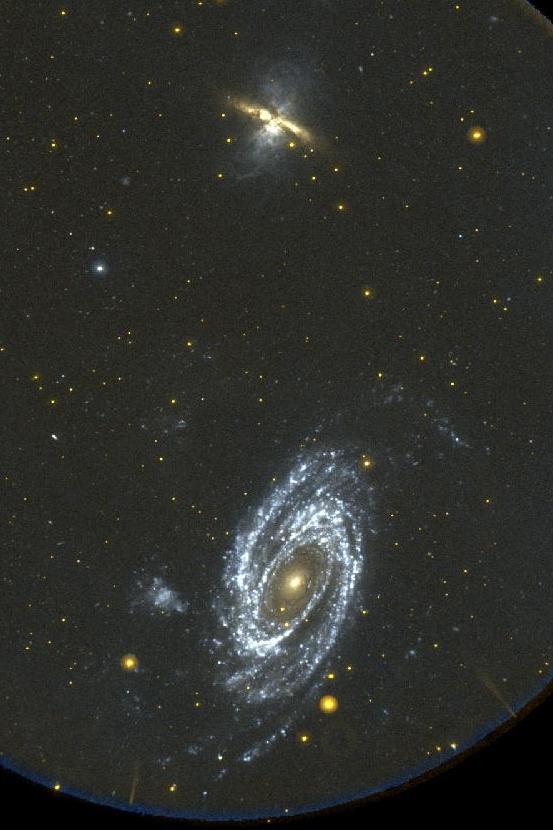
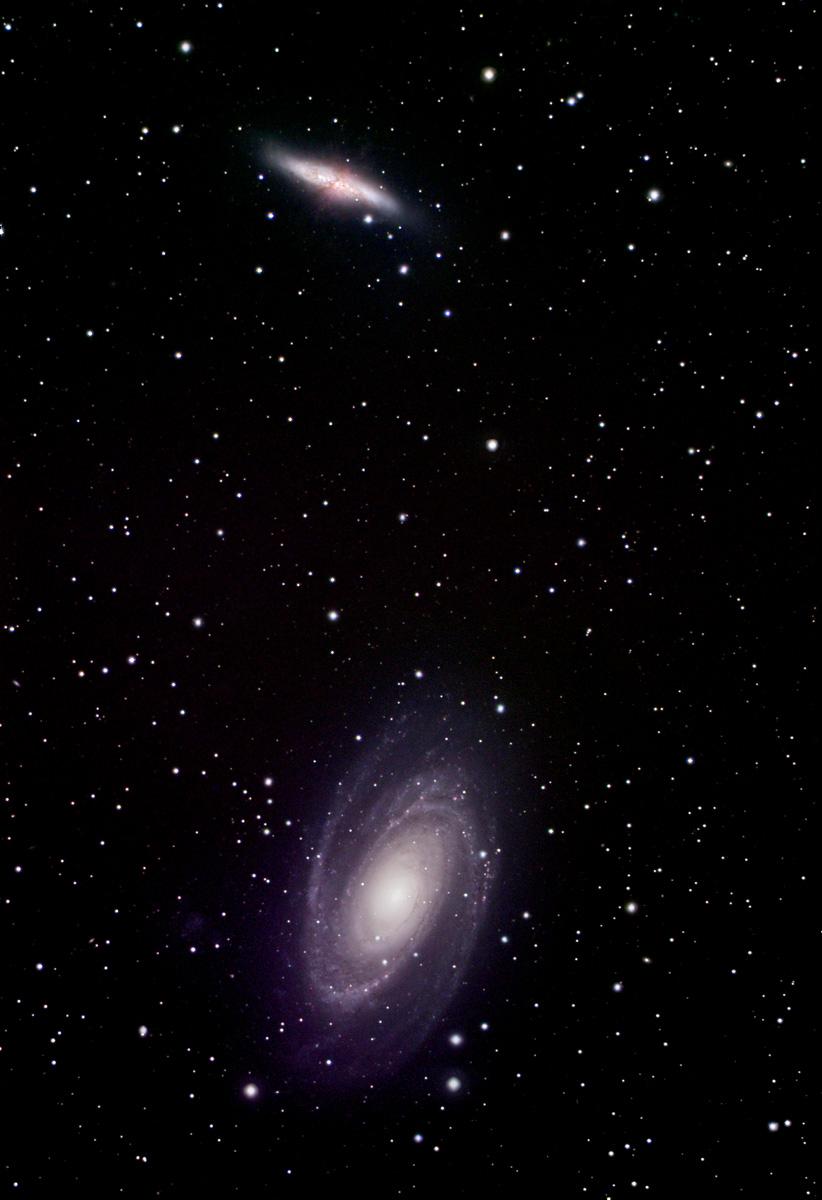
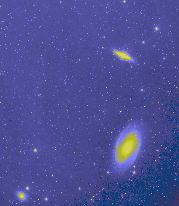
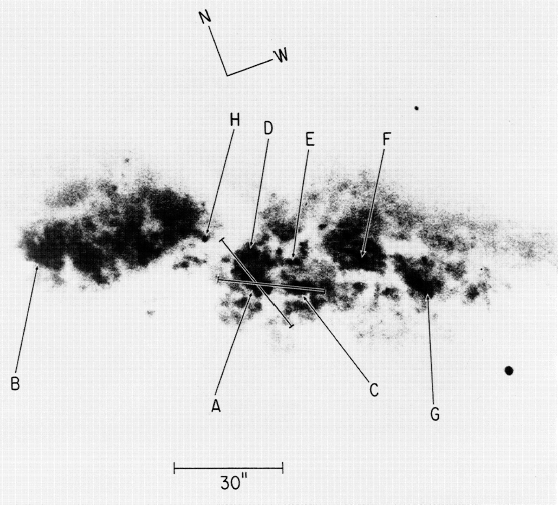
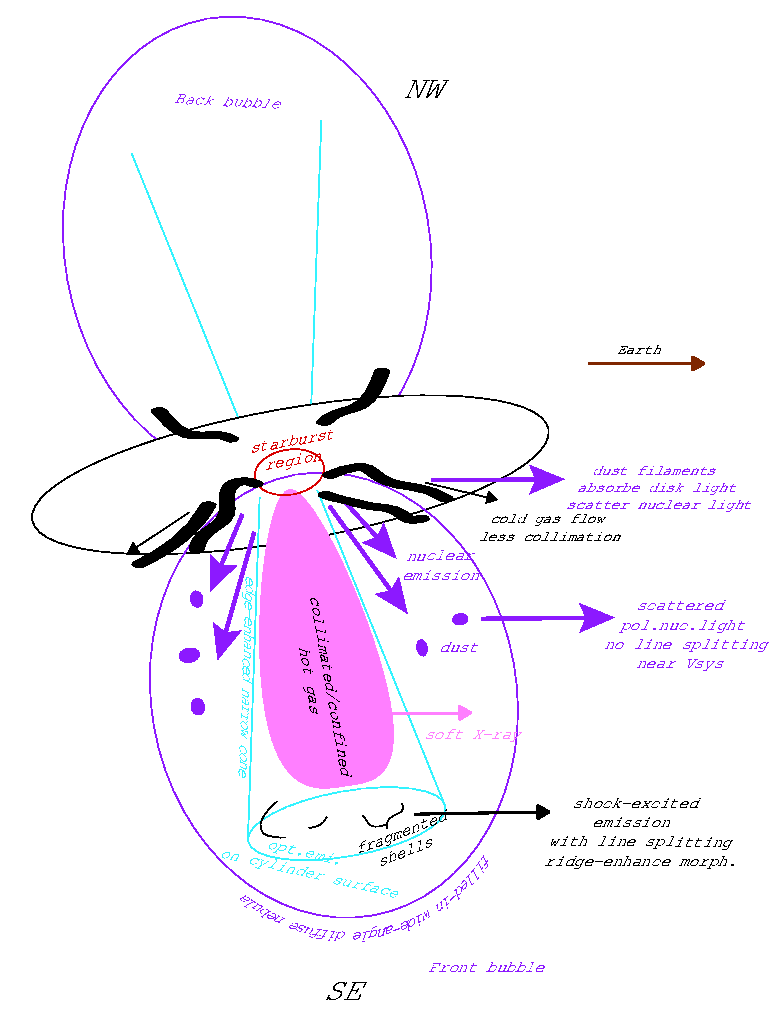
The diskThe intensity distribution of the disk obeys an exponential profile. The K-band scalelength is 47 arcsec (or 825 pc). |
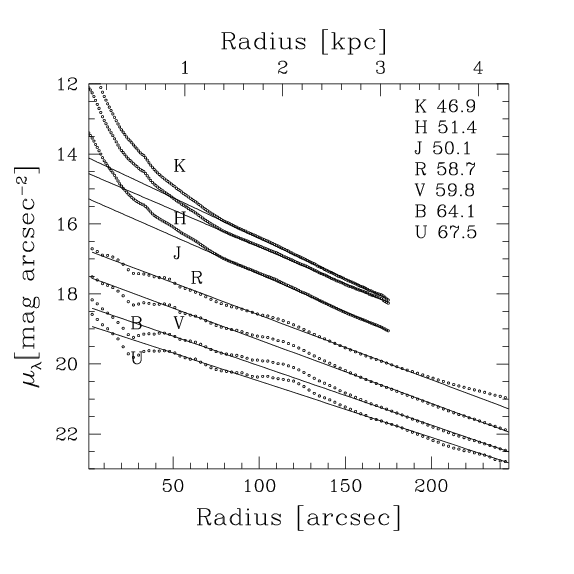 |
The newly discovered spiral armsThe spiral arms are seen only when the exponential disk is subtracted. The resulting arms have a maximum contrast of 1.6 in the K-band and are bluer relative to the disk at the same radius. The arms are found to emerge from the tips of the bar, with a pitch angle of 14o. |
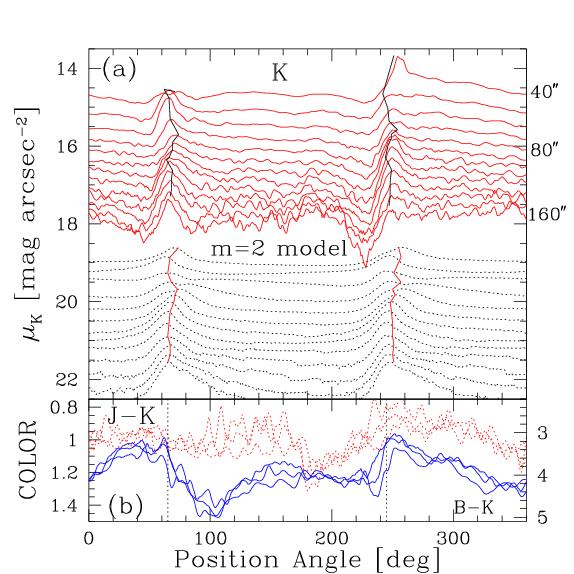 |
The barThe bar has a length of 1 arcmin (1 kpc), and is oriented almost along the major axis of the galaxy. The intensity along the bar is almost constant, whereas parpendicular to it, it falls exponentially. |
|
The NucleusThe nucleus is extremely bright in the K-band, and is barely seen in the optical because of high visual extinction. The high flux is due to the on-going starburst activity in the central 15 arcsec radius. The properties of the starburst are described in a later section. |
|
The nuclear ring/hotspotsMidway through the nucleus and the end of the bar, there are a couple of knots in the near infrared (NIR) band images. These knots would have resembled hotspots/circum-nuclear rings, if the galaxy was seen at a lesser inclination angle. High visual extinction does not allow a clear view of this region in the optical bands. |
|
The HaloM82 images clearly illustrate considerable structure at all wavelengths along the minor axis. These structures could be due to the presence of a thick disk, or could be due to the emission inside the superwind cone, or may be simply disk light scatterred by the dust particles in the halo. |
Simulated galactic sub-components
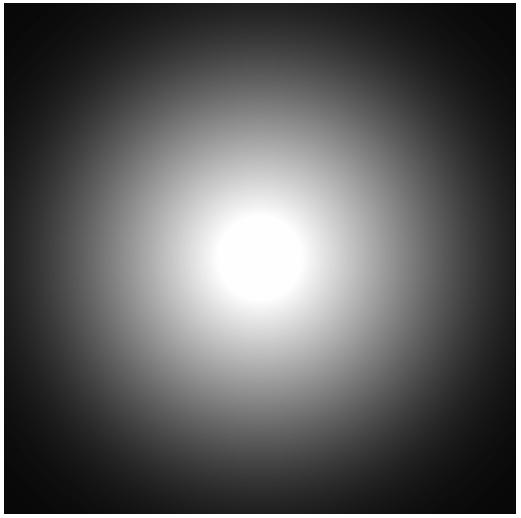 Exponential disk |
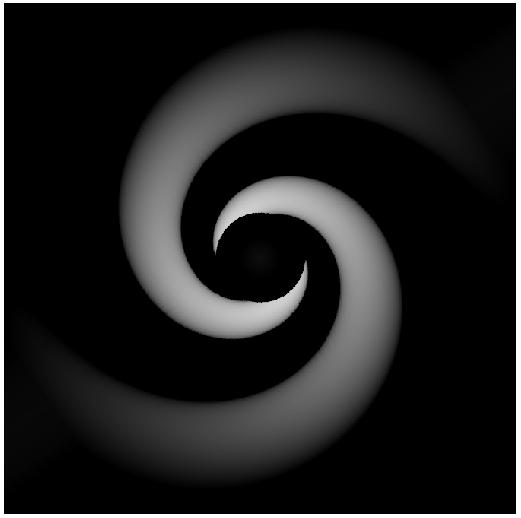 Spiral arm |
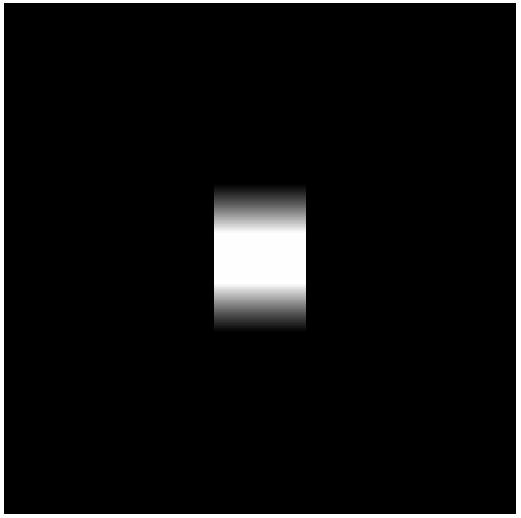 The bar |
 The ring/hostspot |
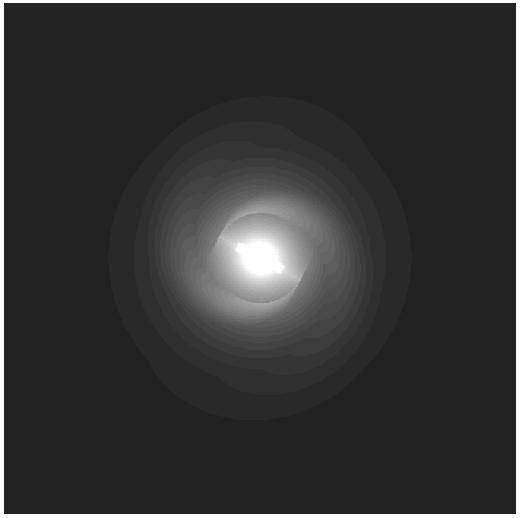 Model: Face-on view |
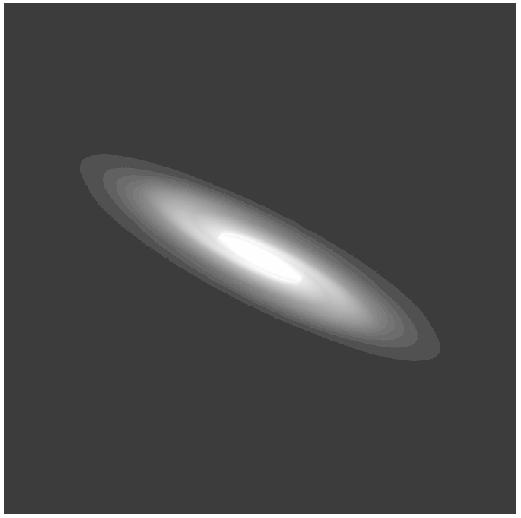 Model: Inclined |
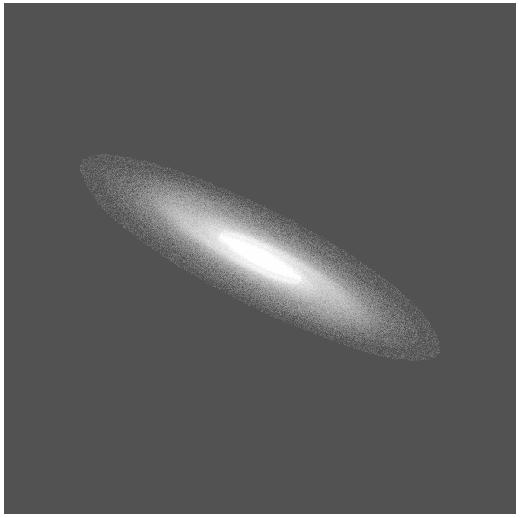 Inclined and Noisy |
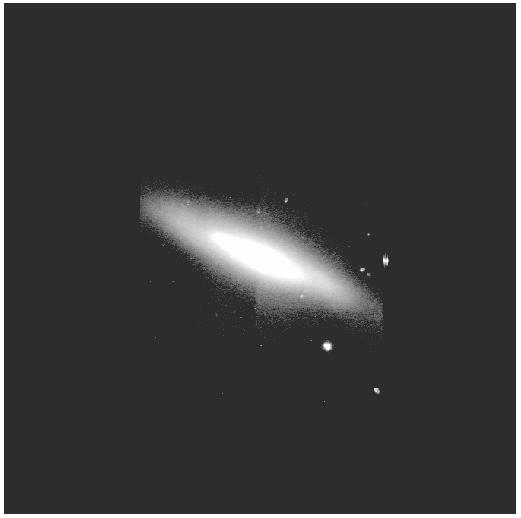 Observed K-band |
 Disk subtracted (Observed K image) |
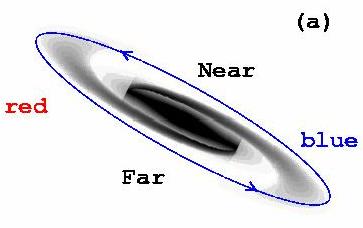 Disk subtracted (Noise-free Simulated) |
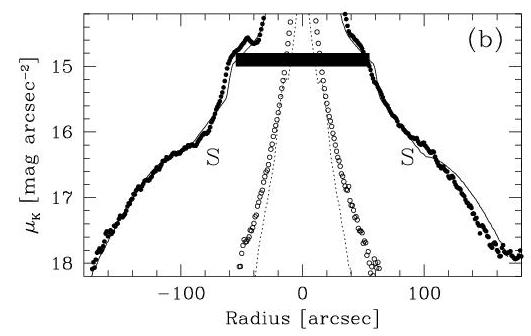 Major and minor axis intensity cuts |